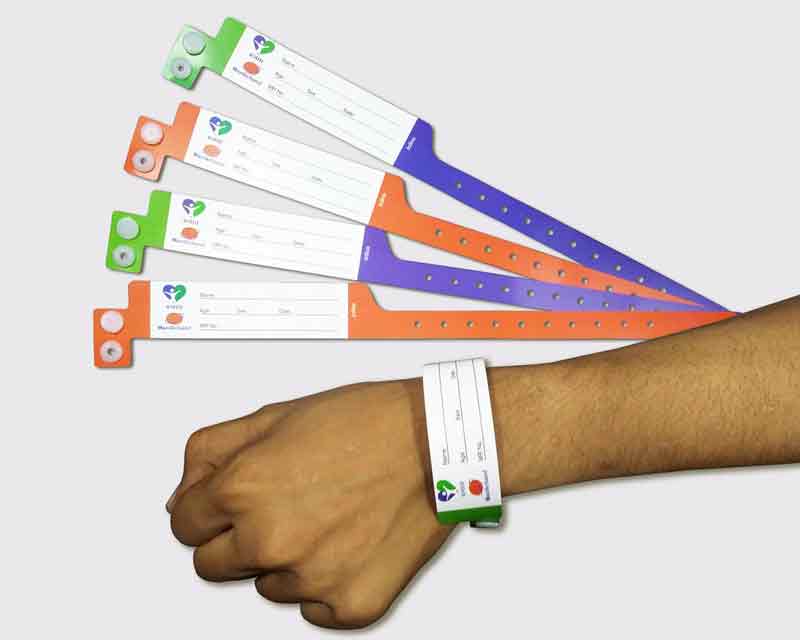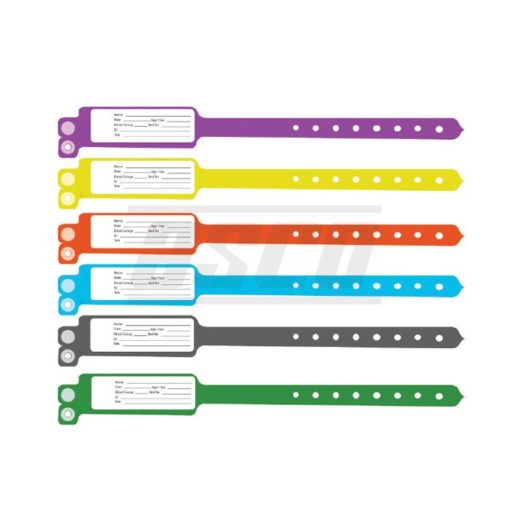Best Practices for Implementing a Patient Identification Band System in Your Clinic
Best Practices for Implementing a Patient Identification Band System in Your Clinic
Blog Article
Discovering the Numerous Kinds Of Patient Identification Band Made Use Of in Medical Facilities
In the detailed world of health care, the essential role of Patient Identification bands often goes unnoticed. These bands, differing from basic paper wristbands to sophisticated RFID bands, develop the foundation of Patient safety procedures, ensuring precision in Patient Identification.
Understanding the Value of Patient Identification Bands
While they might seem like plain devices, Patient Identification bands play an important role in medical facilities. These bands serve as an important device for validating Patient identity, protecting against medical mistakes connected to misidentification. Patient Identification bands likewise aid in simplifying management jobs, making sure exact record-keeping and billing.
Standard Paper Wristbands: Their Usage and Limitations
Standard paper wristbands have actually been a staple in Patient Identification across various medical facilities. While their usage is extensive, they harbor particular constraints that might influence their effectiveness in Patient monitoring. This section will concentrate on the scope of their application and the inherent disadvantages related to their use.
Paper Wristbands: Usage Scope
In the world of Patient Identification, paper wristbands have actually long held a vital role. These bands are normally used in outpatient setups, where the Patient's keep is temporary. Regardless of advancements in modern technology, the humble paper wristband stays a affordable and dependable solution for Patient Identification in numerous medical care situations.
Limitations of Paper Wristbands
Despite their prevalent use, paper wristbands are not without their downsides. Their physical resilience is just one of the considerable restrictions. Exposure to water, sweat, or rough handling can make them unreadable and even create them to break down. Furthermore, paper wristbands typically lack the technical capabilities of more modern alternatives, such as barcoding or RFID chips, limiting their capability to just displaying created info. The failure to upgrade or modify the data on the wristband is an additional imperfection. If the information is transcribed, clarity can be compromised, leading to potential misidentification. Ultimately, paper wristbands can trigger pain or skin inflammation to some individuals, specifically when used for extensive durations.
Barcoded Wristbands: Improvements in Patient Identification
While Patient Identification has long been a critical facet of health care, the advent of barcoded wristbands represents a significant jump ahead. These bands take advantage of the simpleness of barcoding technology, enabling Patient information to be swiftly scanned and accessed. They improve the speed and precision of Patient Identification, lowering the danger of clinical errors associated with misidentification. Barcoded wristbands are economical, easy to produce, and eliminate handwriting errors usual with hand-operated systems. Nevertheless, they are not without constraints. While they provide renovations over conventional bands, the barcode can end up being worn or smudged, providing it unreadable. In spite of this, barcoded wristbands stay a vital tool in modern-day medical care setups, signifying the intersection of modern technology and Patient treatment.
Radio Regularity Identification (RFID) Bands: a Step Towards Futuristic Healthcare
The development of Patient Identification bands has brought about the introduction of Radio Frequency Identification (RFID) Bands (patient identification band). These ingenious gadgets present key advantages for healthcare facilities, supplying a more reliable and highly advanced ways of Patient Identification. The execution of RFID in health care is a substantial action discover this towards an extra futuristic strategy to Patient management and security
Understanding RFID Bands

RFID Bands: Key Advantages
Accepting a future where innovation and healthcare combine, radio regularity Identification bands use a number of key advantages. Mostly, he has a good point these bands improve Patient safety and security by providing accurate, instantaneous Identification, therefore minimizing medical errors. RFID bands can keep a huge amount of Patient information, consisting of case history and allergies, enabling personalized treatment. They additionally enhance administrative jobs, as the automated data entrance changes manual procedures, boosting performance and reducing documents. RFID bands provide real-time tracking of people, important in risky atmospheres such as surgical treatment or extensive treatment. Lastly, these bands are sturdy and immune to environmental factors, making sure consistent performance. Generally, RFID bands stand for a substantial development in Patient Identification modern technology, benefiting both people and doctor.
Carrying Out RFID in Healthcare
These bands supply a seamless method to track and identify people, guaranteeing their safety and security and boosting efficiency in therapy procedures. RFID bands minimize clinical mistakes by giving precise Patient Identification, which is important in stopping misdiagnosis or wrong medicine management. Therefore, the execution of RFID bands is a considerable step in the direction of boosting Patient safety and security and medical care delivery.

Color-Coded Wristbands: Assisting in Quick and Accurate Medical Diagnosis
In the busy setting of a medical center, color-coded wristbands have emerged as vital devices for swift and specific Identification of a client's clinical condition. These wristbands, worn by resource clients, bring certain colors that match to various medical conditions or standings. This system is designed to use prompt visual signs to health care providers, improving Patient safety and security and care top quality.
Methods for Reliable Application and Management of Patient ID Bands
Achieving ideal use of Patient Identification bands demands a well-structured approach for their implementation and monitoring. The very first step involves training all health and wellness workers on the importance of appropriately applying and reviewing these bands. Secondly, hospitals need to systematize making use of ID bands across all divisions, making certain uniformity and lowering discrepancies. Normal audits ought to be performed to validate adherence to plans and to remedy any type of disparities. Patient education is also critical; people need to recognize the function of the bands and the requirement for their constant wear. patient identification band. It's vital to have a back-up strategy in location, such as barcode scanning or biometrics, to guarantee that Patient Identification is never ever endangered.
Verdict
Patient Identification bands are important in medical centers to ensure safety and accuracy. Efficient implementation and monitoring of these bands can dramatically lower clinical mistakes, enhance effectiveness, and boost overall Patient care.
These bands, varying from straightforward paper wristbands to advanced RFID bands, form the foundation of Patient safety and security procedures, making certain accuracy in Patient Identification.The advancement of Patient Identification bands has brought about the development of Radio Regularity Identification (RFID) Bands. In general, RFID bands stand for a significant development in Patient Identification technology, profiting both individuals and health care suppliers.
RFID bands reduce clinical mistakes by giving exact Patient Identification, which is crucial in avoiding misdiagnosis or incorrect medicine administration. Patient education is also critical; people have to comprehend the purpose of the bands and the need for their continuous wear.
Report this page